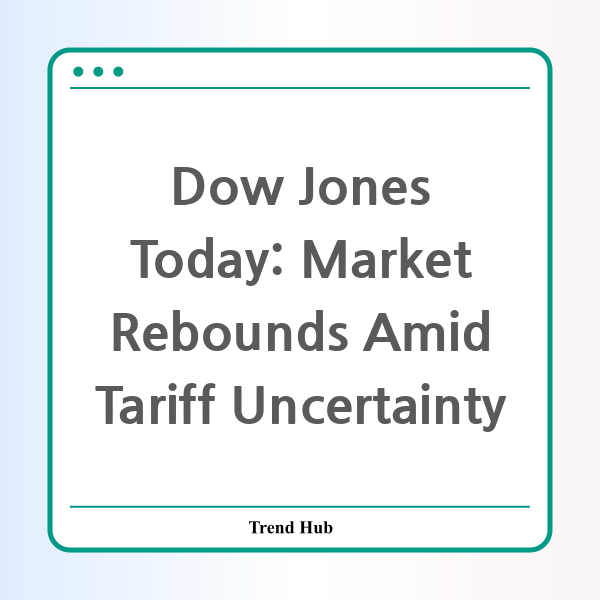* This website participates in the Amazon Affiliate Program and earns from qualifying purchases.

Have you noticed the recent fluctuations in the stock market? Today, the Dow Jones Industrial Average is making headlines with an impressive bounce back after a period of intense tariff-related turmoil. Investors are keenly observing the shifts in market sentiment as stocks respond to both economic indicators and geopolitical tensions.
After several tumultuous trading sessions, Wall Street found some relief as US stocks opened higher today, with the Dow soaring by 1,360 points, or approximately 3.6%. This upward movement is a significant shift from the recent fears that President Trump’s tariff policies would plunge the economy into a recession. As investors scanned the landscape for any signs of hope, they seemed to seize the opportunity to buy, buoyed by the understanding that stock prices had reached historically low price-to-earnings ratios.
Analysts are noting that the market has been extremely oversold, indicating that now could be an opportune moment for investors looking to enter the market or add to their existing positions. Keith Lerner from Truist remarked, “This is a very normal action and very technical in nature after a shock period.” Historical trends suggest that significant market rebounds often occur after drastic downturns, compounding the fear of missing out among traders.
The market's recent surge can also be attributed to the anticipation of potential negotiations surrounding tariffs. The day prior saw a fleeting moment of optimism when rumors about a possible pause in tariffs sent stocks surging temporarily, though such optimism was quickly squashed by White House denials. Nevertheless, the mere suggestion of negotiations has heightened excitement as traders hope for real resolutions.
However, it’s essential to consider that this rebound may not be sustained. The Trump administration has implemented a wide range of tariffs, with some rates as high as 50%, particularly affecting trade with China. The latest developments indicate that further tariffs might be on the horizon, raising the stakes considerably. China’s response has been steadfast, signaling its intent to confront the tariffs, indicating that both countries are engaged in a high-stakes economic standoff.
Given the escalating tensions, many financial institutions, like Goldman Sachs and JPMorgan Chase, are warning that further escalation of the trade conflict could lead to a recession in both the United States and globally. This perspective casts a shadow over the recent market gains as investors weigh the risk of a prolonged trade war against the immediate benefits of current stock purchases.
While some in the Trump administration express optimism about the market’s recovery, declaring that the bottom has been reached, skepticism remains among analysts and economists. Concerns persist regarding the long-term implications of tariffs on pricing, consumer demand, and global economic stability. For instance, even prominent business figures have cautioned against the adverse effects of such policies on trade relations and economic growth.
In summary, the Dow Jones today exemplifies the complexity of the current market landscape—bouncing back from fear-induced lows while being propelled by the hope of brighter days ahead. As the world watches to see how the tariff saga unfolds, one question looms: Will this stock market rally sustain itself, or is it merely a fleeting moment in a volatile economic landscape?
As always, staying informed and prepared for rapid changes in the market is crucial for any investor. Buying opportunities may arise, but so too could new challenges, making this an exciting yet uncertain time for those navigating the stock market.
* This website participates in the Amazon Affiliate Program and earns from qualifying purchases.